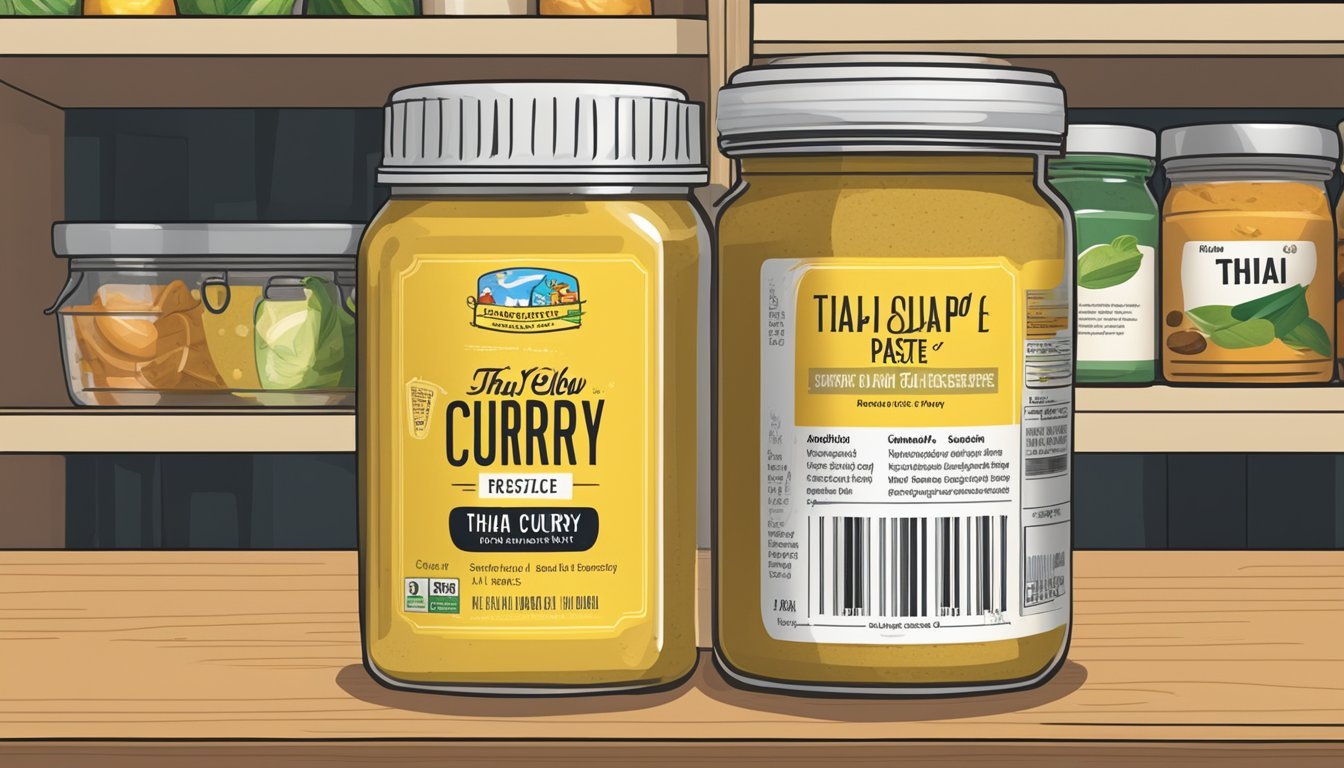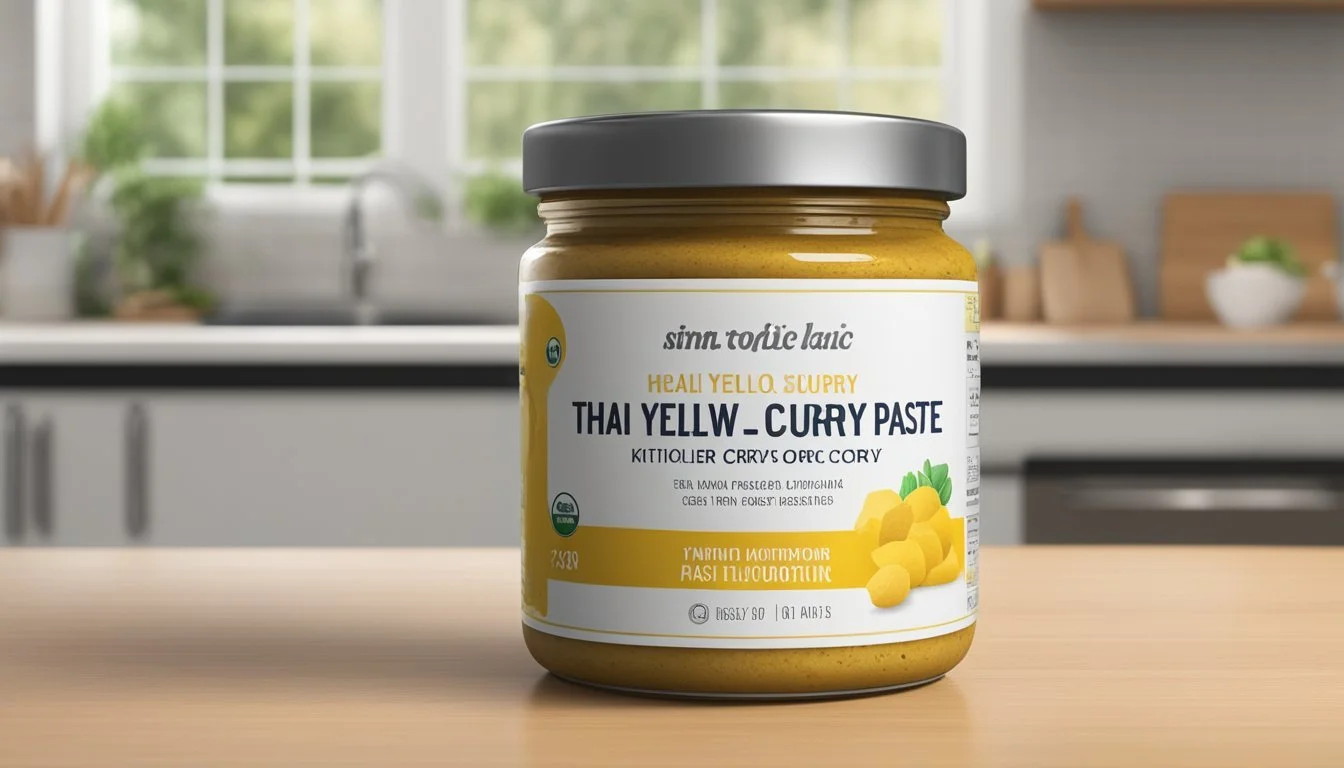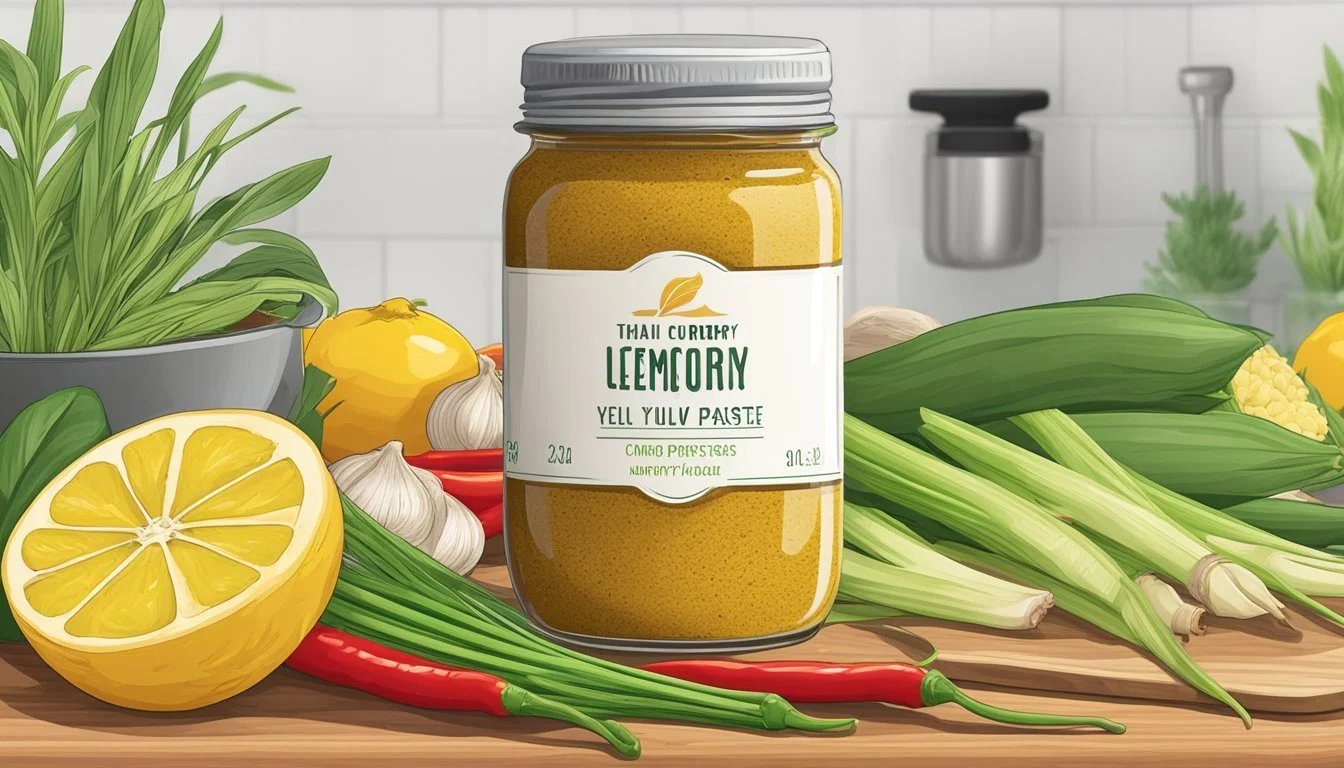Does Thai Yellow Curry Paste Expire?
Understanding Shelf Life and Storage Tips
Thai yellow curry paste, an essential ingredient in Thai cuisine, is known for its rich and aromatic flavors. Yet, many wonder whether this flavorful paste can expire. Thai yellow curry paste does expire, particularly once opened, but it can remain usable for several months if stored properly.
When unopened, yellow curry paste can last for several years without significant loss of quality, provided it is stored in a cool, dry place. After opening, it should be kept in an airtight container and refrigerated, where it can stay fresh for about 3 to 4 weeks. The flavors begin to degrade beyond this period, making it less effective for creating authentic dishes.
Proper storage practices are vital in extending the lifespan of yellow curry paste. Avoid plastic containers as they may leach chemicals into the paste or absorb its flavors. For the best experience, always check the paste for any signs of spoilage, such as an off smell or discoloration, before use.
Understanding Curry Pastes
Curry pastes are foundational ingredients in various cuisines, particularly in Thai and Indian cooking. Each type of curry paste has unique flavors derived from a distinct blend of spices and aromatics.
Varieties of Curry Paste
Thai and Indian cuisines use several types of curry pastes, distinguished by color and flavor. Red curry paste is made from dried red chilies and includes garlic, lemongrass, and other spices. Green curry paste utilizes green chilies and is often fresher and more aromatic due to the inclusion of fresh herbs like coriander.
Yellow curry paste, which is similar to Indian curry paste, commonly contains turmeric for its distinct color and anti-inflammatory properties. Indian curry pastes often blend spices such as cumin, coriander, and ginger, creating a diverse spectrum of flavors.
Different regions may have unique variations, incorporating local ingredients and techniques. The preparation method and storage conditions, such as refrigeration, influence the longevity and quality of curry pastes.
Key Components of Yellow Curry Paste
Yellow curry paste builds its robust flavor profile largely from turmeric, which gives it a vibrant yellow hue and earthy taste. Other crucial ingredients include lemongrass, ginger, and garlic, which impart aromatic and spicy notes. Cumin and coriander are also essential spices, providing depth and warmth to the paste.
Sometimes, shallots and galangal are added to enhance the complexity of the flavors. Each of these ingredients plays a specific role. For example, lemongrass adds a citrusy freshness, while ginger and garlic contribute pungency and heat.
The exact composition can vary, but the balance of these components aims to create a paste that is both flavorful and versatile, suitable for a variety of dishes from seafood to poultry.
Proper storage, such as keeping it in an airtight container in the refrigerator, ensures that the paste retains its flavor and prevents spoilage.
Shelf Life and Expiration
Thai yellow curry paste can last a long time if stored properly, but its shelf life depends on whether the jar is opened or unopened and its storage conditions. Correct handling is essential to maintain flavor and safety.
Determining the Shelf Life
The shelf life of Thai yellow curry paste varies based on its storage. Unopened jars can last for two to three years when kept in a cool, dry place away from direct sunlight. Maintaining a stable temperature can prevent spoilage.
After opening, the paste should be stored in an airtight container in the refrigerator. It can generally remain good for about 3 to 4 weeks. Moisture and air exposure should be minimized to extend freshness. Regularly check for any signs of spoilage like discoloration or an off odor.
The Role of Expiration Dates
Expiration dates on curry paste jars provide a guideline but are not absolute indicators of safety. Unopened jars often remain safe beyond this date if stored correctly. Be aware of environmental factors such as humidity and temperature as they can affect product longevity.
For opened jars, the expiration date becomes more critical. Proper sealing and refrigeration are key. A past-date product should be inspected for spoilage signs like unusual smell or texture before use. Avoid letting the paste sit in risk-prone spots like near the stove where temperature fluctuations occur.
Storage Guidelines
To maintain the quality and shelf life of Thai yellow curry paste, it is essential to store it correctly. Follow these suggestions for proper storage, refrigeration, and freezing to ensure your curry paste remains fresh and flavorful.
Proper Storage Conditions
Thai yellow curry paste should be stored in an airtight container to prevent exposure to air, which can cause spoilage. Glass jars with tight-fitting lids are ideal for this purpose. If you are using the original packaging, ensure it has a good seal.
Store the container in a cool, dry place away from direct sunlight. Heat and moisture can lead to bacterial growth. Consequently, a pantry or cupboard is suitable if it’s not too warm. Make sure to label the container with the date of opening for easy tracking.
Refrigeration vs. Freezing
Once opened, Thai yellow curry paste should be refrigerated immediately. It will stay fresh for 3 to 4 weeks in the fridge. After this period, the flavors may start to deteriorate, even though the paste itself might still be safe to consume.
For extended storage, freezing is an excellent option. Place the curry paste in a freezer-safe airtight container. This prevents freezer burn and maintains the paste's flavor and texture. When properly stored in the freezer, Thai yellow curry paste can last for several months. Be sure to label the container with the date of freezing for reference.
By following these guidelines, you can ensure that your Thai yellow curry paste remains fresh and safe to use for a longer period.
Identifying Signs of Spoilage
When checking if Thai yellow curry paste has expired, it’s important to examine its visual appearance, texture, and odor. Recognizing these signs early can prevent the consumption of spoiled paste, which can lead to health issues.
Visual and Textural Clues
The first step is to observe any visible changes. Color changes can indicate spoiling; the paste might become darker or develop off-colors. Mold growth is an obvious sign. If mold appears, it’s unsafe to use.
Texture can also denote spoilage. Fresh paste is generally smooth. If it turns grainy or excessively dry, that's a problem. Bacteria growth may manifest as unusual textures or sliminess. Always consider these factors before usage.
Odor as an Indicator of Quality
Using the smell test can be very telling. Fresh Thai yellow curry paste has a strong, characteristic aroma. If the paste smells sour or off, bacterial contamination is likely. This change in odor suggests the presence of spoilage and makes the paste unsafe for use.
Consistency of the smell is key. A rancid or fermented odor indicates the paste has gone bad and could cause food poisoning if consumed. Trusting your sense of smell can effectively gauge the paste's quality.
Health and Safety Considerations
Expired Thai yellow curry paste can pose significant health risks if not stored or used correctly.
Food safety should always be the top priority when considering the use of this paste. An unopened paste stored in a cool, dry place may last longer, but once opened, it should be refrigerated.
Storage conditions are crucial. The paste should remain in an airtight container, and the fridge is ideal for extending its shelf life.
Signs of spoilage include unusual odors, changes in color, or the presence of mold. Any of these indicators suggest the paste is unsafe to consume.
Bacterial growth can occur if the paste is exposed to moisture and heat. Bacteria such as Salmonella and E. coli thrive in such conditions, potentially leading to food poisoning.
Preservatives in commercially produced curry pastes can extend their shelf life, but they do not eliminate the risk of bacterial contamination.
High-risk groups, including young children, the elderly, and immunocompromised individuals, should avoid consuming expired paste due to their increased vulnerability to foodborne illnesses.
Symptoms of food poisoning might include nausea, vomiting, diarrhea, and abdominal pain.
Maintaining proper handling and storage protocols ensures that the curry paste remains both flavorful and safe to eat.
In summary, paying attention to storage methods, recognizing signs of spoilage, and understanding the risks associated with bacterial contamination can prevent health issues.
Maximizing Flavor and Freshness
Understanding how storage affects Thai yellow curry paste's flavor profile and implementing best practices ensures the paste remains fresh and flavorful for as long as possible.
Impact of Storage on Flavor Profile
Storage conditions significantly influence the flavor profile of Thai yellow curry paste. Exposure to air, light, or heat can degrade the paste's aromatic compounds. This degradation may cause the flavors from the herbs and spices to weaken over time.
Best Practices for Freshness
To maximize freshness, store Thai yellow curry paste in an airtight container. Refrigerate immediately after opening to maintain its quality. Avoid contamination by using clean utensils each time. Rotate the paste regularly to use the older stock first, ensuring that all the ingredients retain their robustness.
Practical Usage Tips
Expired Thai yellow curry paste can still be useful if handled properly. Key considerations include safety checks and creative culinary applications.
Cooking With Expired Curry Paste
Even if curry paste has expired, it may still be safe to use.
Visual and Smell Check: Before using, inspect for any mold or unusual odors. A paste that appears fresh and has its typical aromatic scent is likely safe to cook with.
Cooking Methods: When in doubt, cooking at high temperatures can help kill potential bacteria. Use the paste in stews, soups, or curries where it will be thoroughly heated.
Recipes: Consider recipes that allow for extended cooking times, such as slow-cooked Thai curries or Indian stews. The robust flavors can infuse through meats and vegetables, ensuring a safe and delicious meal.
Creative Ways to Use Old Curry Paste
Old curry paste doesn't need to go to waste and can be a flavorful addition to various dishes.
Marinades: Mix the paste with yogurt, oil, or coconut milk to create a flavorful marinade for meats. Let the meat soak for a few hours before grilling or baking to impart rich, spicy flavors.
Dips and Sauces: Combine the paste with ingredients like mayonnaise or sour cream to make a unique dip. This can be great with veggies or as a base for sandwiches.
Fusion Cuisine: Experiment with using the paste in unconventional ways. Try adding a small amount to rice dishes, stir-fries, or even as a pizza sauce base. This can create exciting fusion dishes blending Thai and Indian cuisine elements.
Additional Tips: Store opened curry paste in glass jars and refrigerate promptly to extend its shelf life. Use within a month for optimal flavor and safety.
Understanding Expiration and Food Safety
Thai yellow curry paste, like many food products, has an expiration date which indicates the period during which it is expected to retain its best quality.
The Dynamics of Expiration and Safety
The expiration date on curry paste is an indicator of optimal quality rather than an absolute deadline for safety. If stored correctly, unopened curry paste can remain safe to use for three or more years.
Opened curry paste, when refrigerated, is safest within two to three weeks, though it might stay good for a few months. Heat and pressure during storage can affect its shelf life. If the paste changes in smell, texture, or color, it might have spoiled and should be discarded.
Always store curry paste in airtight containers to prevent spoilage and maintain taste. Proper storage ensures the paste remains hygienic and flavorful for longer periods, minimizing health risks and preserving its culinary benefits.







